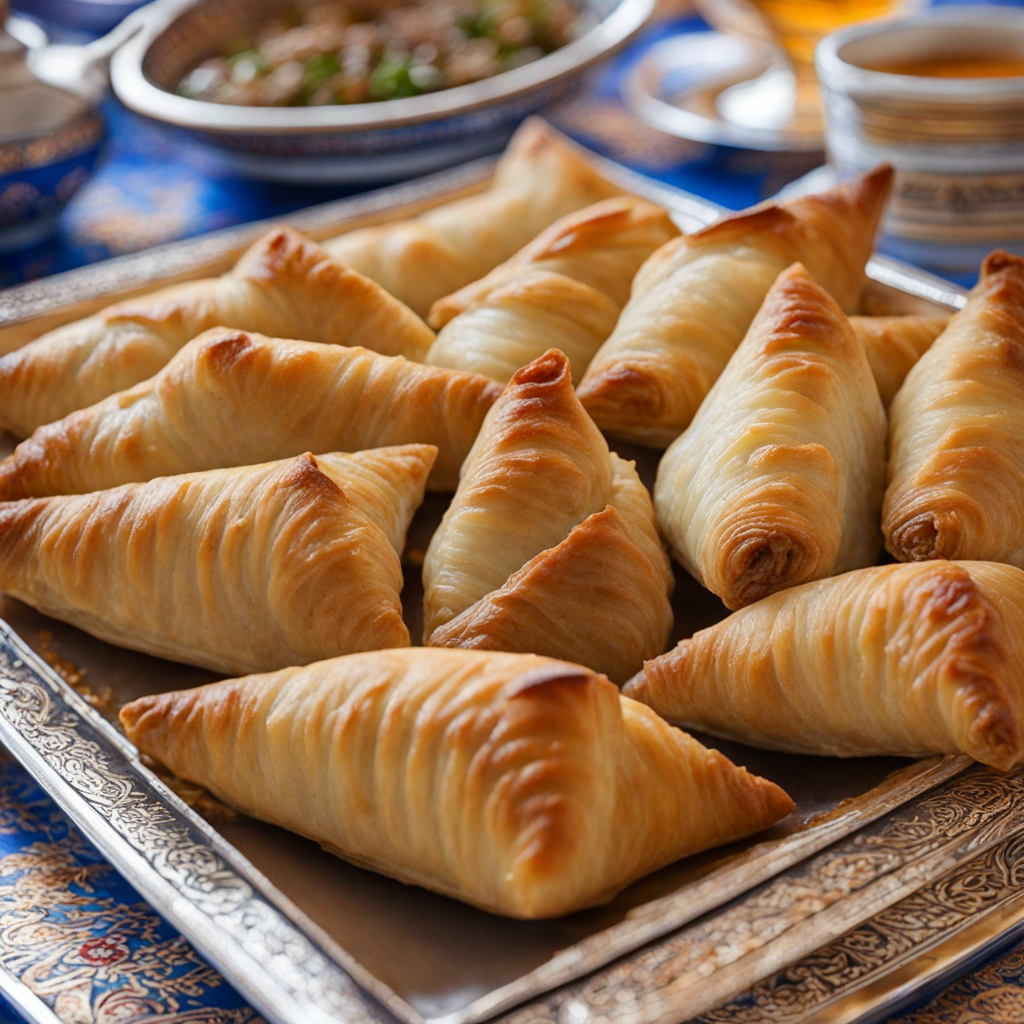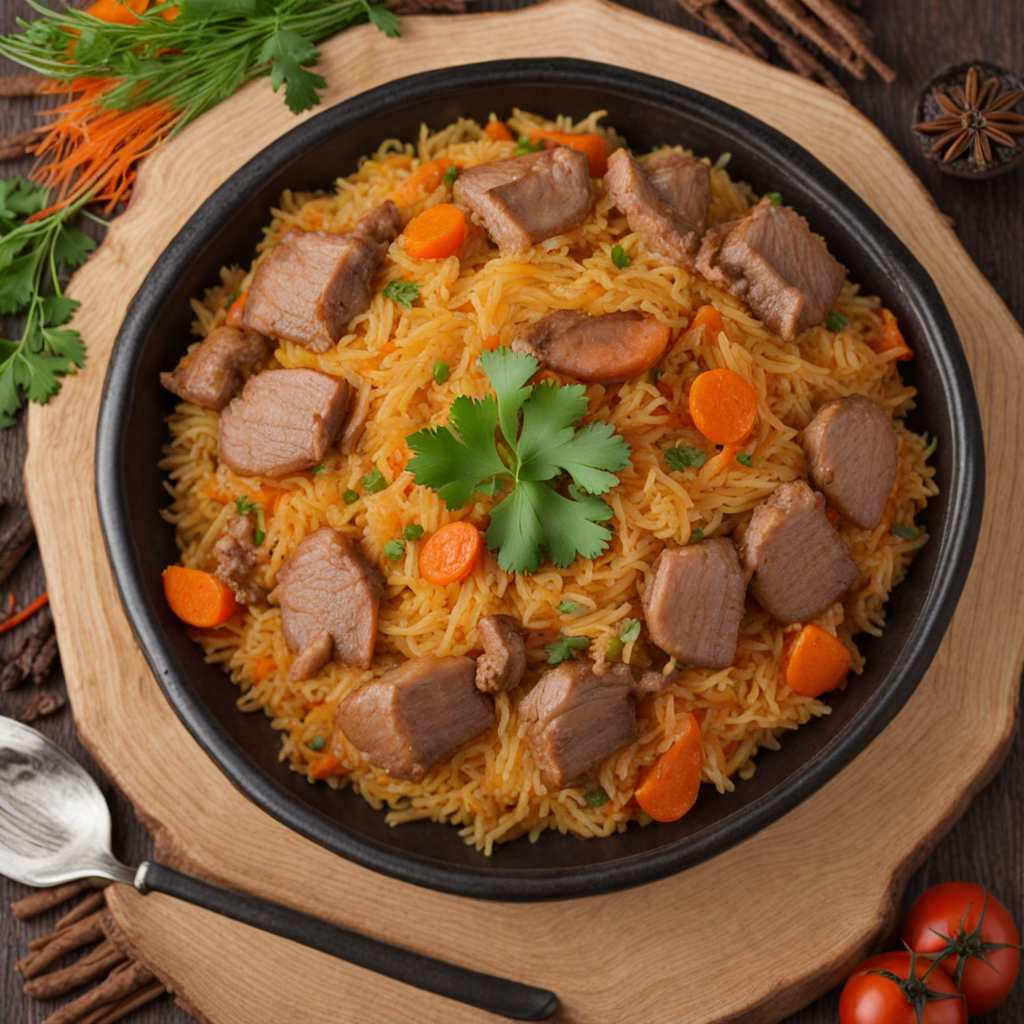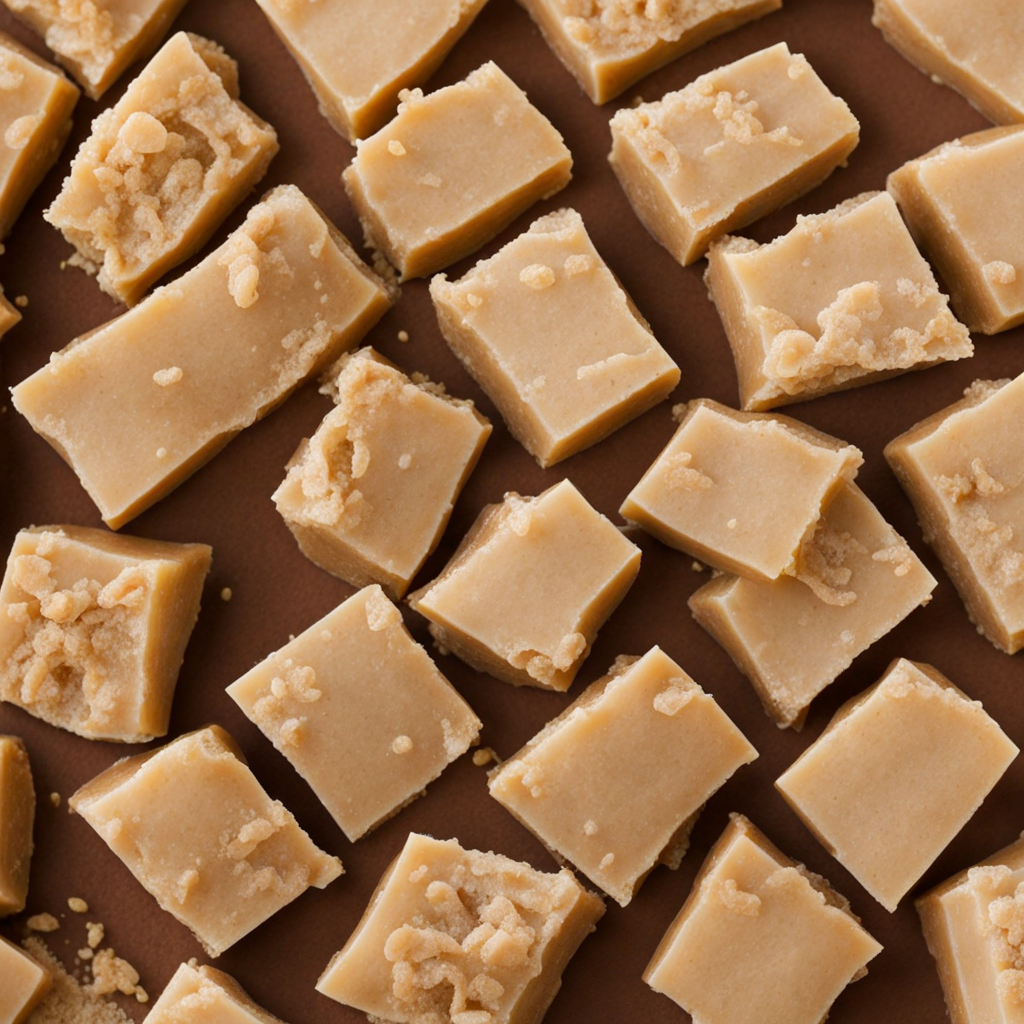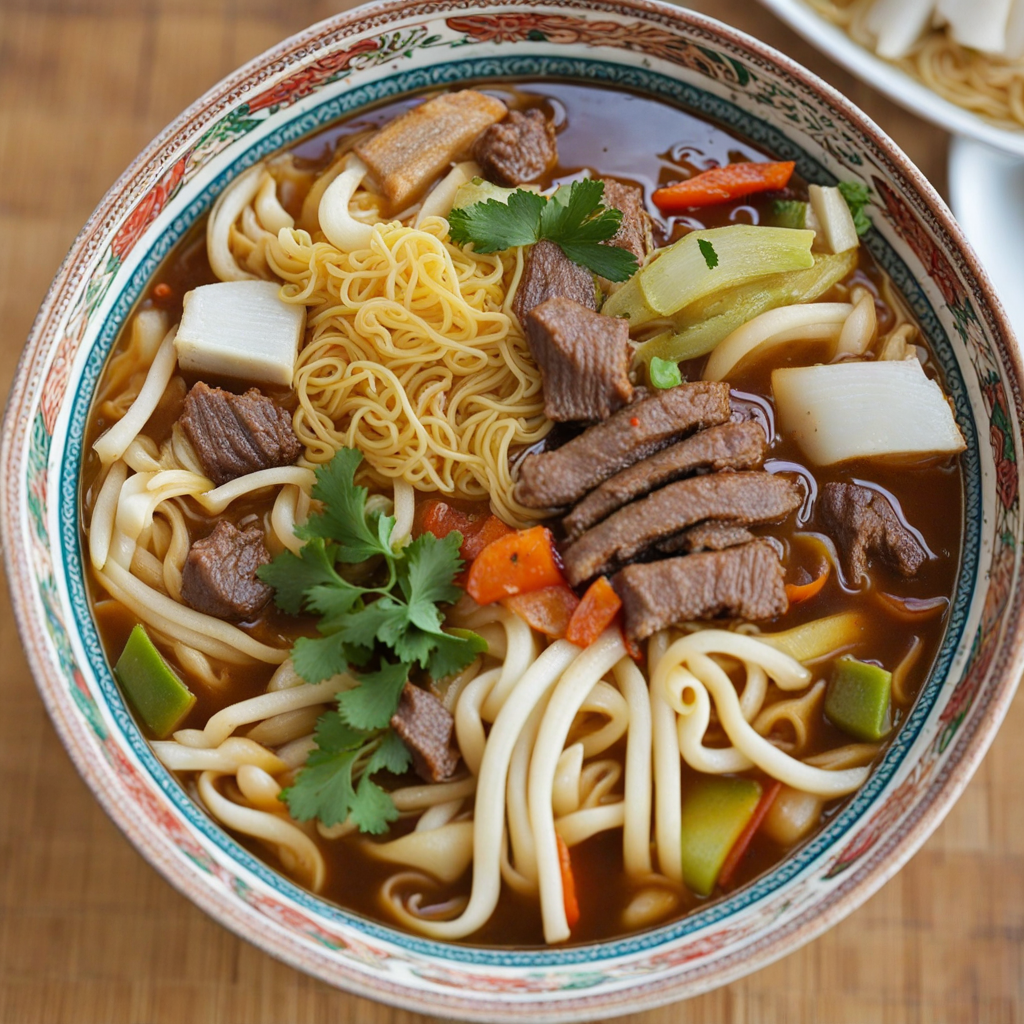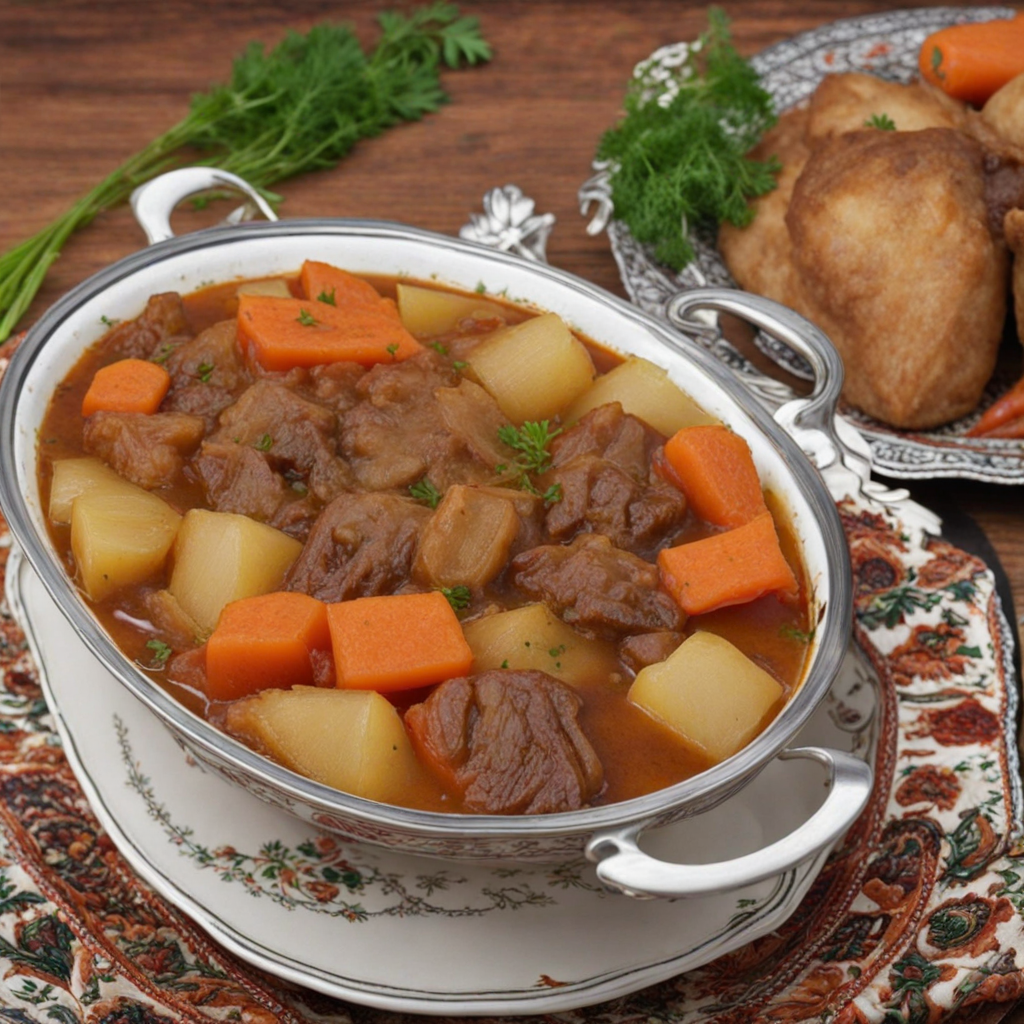Samsa
Samsa is a delightful pastry that hails from Uzbekistan, embodying the rich culinary traditions of Central Asia. These savory treats are typically made with a flaky, golden-brown dough that encases a variety of fillings, most commonly seasoned meat, such as lamb or beef, along with onions and spices. The dough is often prepared using flour, water, and a touch of salt, which is rolled out and shaped into triangles or squares, creating a rustic yet inviting appearance. Each bite reveals a succulent filling that is deeply flavorful, thanks to the aromatic spices that are characteristic of Uzbek cuisine, such as cumin and coriander, which complement the meat beautifully. In addition to the traditional meat filling, samsa can also be made with vegetables or cheese, offering a vegetarian alternative that retains the essence of this beloved dish. The fillings are sometimes enhanced with the addition of potatoes or pumpkin, which adds a unique sweetness and texture to the savory mix. The pastries are typically baked in a tandoor oven, which gives them a distinctive charred flavor and a crispy exterior, while ensuring the inside remains tender and juicy. This cooking method not only enhances the taste but also adds a layer of authenticity to the experience of enjoying samsa. Samsa is often enjoyed as a street food snack or as part of a larger meal, making it a versatile option for any occasion. It is commonly served with a side of tangy yogurt or a fresh salad, which balances the richness of the pastry. Each samosa is a small masterpiece, representing the heart and soul of Uzbek culinary culture, inviting you to savor its layered flavors and textures. As you take your first bite, the warm, flaky crust gives way to a burst of savory goodness, transporting you to the vibrant markets of Uzbekistan, where these delightful pastries are a cherished staple.
How It Became This Dish
The History of Самса: A Culinary Journey Through Uzbekistan In the heart of Central Asia lies Uzbekistan, a nation steeped in rich cultural traditions and a vibrant culinary heritage. Among its many iconic dishes, самса (samsa) stands out as a beloved pastry that has captured the hearts and palates of both locals and visitors alike. This savory delight, often filled with meat and spices and enveloped in a flaky pastry, tells a fascinating story of history, culture, and evolution. Origins of Самса The roots of самса can be traced back to the ancient Silk Road, a network of trade routes that connected the East and West. This region, which includes present-day Uzbekistan, has long been a melting pot of cultures, cuisines, and traditions. The very essence of самса is intertwined with the nomadic lifestyle of the Turkic peoples, who roamed the steppes and sought portable, nourishing food that could withstand the rigors of travel. Historically, bread has held a sacred place in Central Asian culinary practices, and самса is no exception. The word "самса" itself is believed to derive from the Persian word "samsa," which refers to a triangular shape. This reflects the pastry’s distinctive form, which resembles a triangle or pyramid. It is thought that the culinary technique of wrapping fillings in dough and baking them was influenced by Persian and Indian cuisines, as those cultures also feature similar stuffed pastries. Cultural Significance Самса is not just a dish; it embodies the social fabric of Uzbek life. Traditionally, it is served during celebrations, family gatherings, and festivals, symbolizing hospitality and abundance. In many Uzbek households, the preparation of самса is a communal activity, often involving multiple generations coming together in the kitchen. This fosters a sense of unity and reinforces familial bonds, as recipes are passed down from grandmother to mother to daughter, preserving the culinary heritage of the region. In Uzbekistan, самса is often associated with special occasions, such as weddings, birthdays, and religious holidays. For example, during the month of Ramadan, it is common to break the fast with самса, enjoyed alongside other traditional dishes. This connection to celebration highlights the importance of food in marking life’s milestones and creating lasting memories. Development Over Time The evolution of самса has been influenced by various factors, including regional ingredients, culinary techniques, and cultural exchanges. In ancient times, the filling of самса was often limited to what was locally available, such as lamb, beef, or chicken, seasoned with aromatic spices like cumin, coriander, and black pepper. Today, the fillings have diversified, with variations including pumpkin, potatoes, and even cheese, catering to the modern palate and dietary preferences. One significant development in the history of самса is the introduction of different cooking methods. While traditional самса is baked in a tandoor, a clay oven that imparts a unique smoky flavor, modern adaptations have seen it prepared in conventional ovens or even fried. This versatility has allowed самса to adapt to changing culinary trends while still retaining its essence. Another noteworthy aspect of самса's development is its regional variations across Uzbekistan and neighboring countries. In Samarkand, for instance, самса is often made with a thinner pastry, resulting in a crispier texture, while in Bukhara, the filling may include a mix of meat and vegetables. In neighboring countries like Kazakhstan and Tajikistan, similar pastries exist, showcasing the shared culinary heritage of the region while also highlighting local ingredients and tastes. The Role of Самса in Modern Uzbekistan In contemporary Uzbekistan, самса continues to thrive as a staple street food and a symbol of national identity. Street vendors and bakeries across the country serve freshly baked самса, enticing passersby with their aroma. The bustling bazaars of Tashkent, Samarkand, and Bukhara are alive with the sight of vendors rolling out dough and filling it with delicious mixtures, reflecting the vibrant food culture that thrives in these urban centers. Moreover, самса has gained international recognition, with Uzbek restaurants around the world showcasing this delightful pastry on their menus. As globalization continues to influence culinary trends, самса has found its way into fusion cuisine, merging with other culinary traditions, which introduces new flavors and techniques while maintaining its core identity. Conclusion The history of самса is more than just a tale of a delicious pastry; it is a reflection of Uzbekistan's rich cultural tapestry, shaped by centuries of trade, migration, and culinary exchange. From its origins along the Silk Road to its place in modern Uzbek life, самса has evolved while remaining deeply rooted in tradition. Today, as people gather around the table to enjoy this savory pastry, they participate in a time-honored ritual that transcends generations. The act of making and sharing самса not only nourishes the body but also nourishes the spirit, fostering connections among family and friends. In every bite of самса, one can taste the history, culture, and love that has been woven into this beloved dish, making it a true emblem of Uzbek culinary heritage. As the world continues to discover the flavors of Uzbekistan, самса stands as a delicious testament to the enduring power of food to bring people together, celebrate traditions, and create lasting memories.
You may like
Discover local flavors from Uzbekistan



